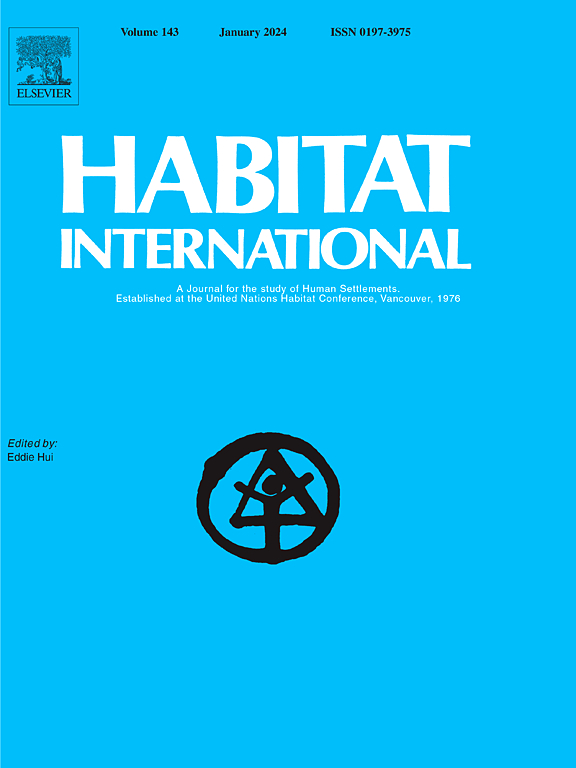基于农村人口、农业生产用地和农村聚落耦合的西南喀斯特山区农村人地关系变迁
IF 6.5
1区 经济学
Q1 DEVELOPMENT STUDIES
引用次数: 0
摘要
农村人口、农业生产用地和农村居民点是农村人地系统的核心。分析人地关系变迁对西南喀斯特山区农村生态保护和高质量发展具有重要意义。然而,目前的研究还缺乏对这三者之间互动逻辑的充分分析和对人地关系过渡模式的探索。构建基于农村人口、农业生产用地和乡村聚落耦合的分析框架,分析西南喀斯特山区人地关系的时空演化特征与变迁模式,并探索交互逻辑与驱动机制。研究结果表明:①人口与土地呈现阶段性变化特征,总体表现为农村人口和农业生产用地持续减少,农村居民点持续扩大,且在不同高程、坡度和方位上存在明显的空间分异;(2)农村人口、农业生产用地、农村聚落之间的相互作用形成了明显的人地关系过渡趋势,“人口减少-土地增加-聚落增加”型人地关系有利于喀斯特山区生态与经济的协调发展。(3)自然环境、社会经济和政策因素是人地关系变迁的主要驱动机制,政策力度的增强逐渐主导着人地关系的演变。提出差异化发展战略,为全球同类地区的可持续发展提供借鉴。本文章由计算机程序翻译,如有差异,请以英文原文为准。
The rural human-land relationship transition in Southwest karst mountainous areas based on rural population, agricultural production land, and rural settlement coupling
Rural population, agricultural production land, and rural settlement are the core of the rural human-land system. Analysis of the human-land relationship transition is significant for rural ecological protection and high-quality development in karst mountainous areas of Southwest China. However, current research still lacks sufficient analysis of the interactive logic among these three elements and exploration of the transition patterns of the human-land relationship. This study constructs an analytical framework based on the coupling of rural population, agricultural production land, and rural settlement to analyze the spatiotemporal evolution characteristics and transition patterns of human-land relationship in the karst mountainous areas of Southwest China, and explores the interaction logic and driving mechanism. The research results indicate that: (1) Population and land are characterized by phased changes, with the overall manifestation that the rural population and agricultural production land continue to decrease, while rural settlement continue to expand, with significant spatial differentiation at different elevations, slopes, and orientations. (2) The interaction among the rural population, agricultural production land, and rural settlement has formed an obvious transition trend of human-land relationship, in which the "population decline-land increase-settlement increase" type of human-land relationship is conducive to the coordinated development of ecology and economy in karst mountainous areas. (3) Natural environment, socioeconomic, and policy factors are the main driving mechanisms for the human-land relationship transition, and the increasing policy strength gradually dominates the evolution of the human-land relationship. We proposed differentiated development strategies, which can serve as a reference for sustainable development in similar regions worldwide.
求助全文
通过发布文献求助,成功后即可免费获取论文全文。
去求助
来源期刊

Habitat International
Multiple-
CiteScore
10.50
自引率
10.30%
发文量
151
审稿时长
38 days
期刊介绍:
Habitat International is dedicated to the study of urban and rural human settlements: their planning, design, production and management. Its main focus is on urbanisation in its broadest sense in the developing world. However, increasingly the interrelationships and linkages between cities and towns in the developing and developed worlds are becoming apparent and solutions to the problems that result are urgently required. The economic, social, technological and political systems of the world are intertwined and changes in one region almost always affect other regions.
 求助内容:
求助内容: 应助结果提醒方式:
应助结果提醒方式:


